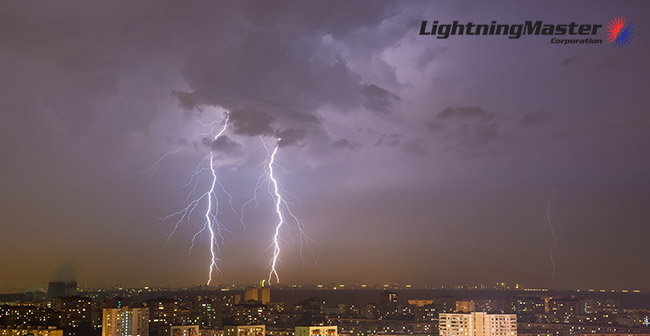What are the different types of lightning?
Types of Lightning and Why they Matter
Everyone knows of lightning and the dangers this phenomena can present. But did you know there are different types of lightning? If you are a facilities manager or owner and have to think about communication tower lightning protection, lightning protection for chemical plants, lightning protection for fuel storage tanks, etc., then it is important to know about the different types of lightning and how to deal with them. Even though all lightning is caused by positive and negatively charged molecules bumping into each other, what happens after can be different. This is why there are different types of lightning.
There are four basic types of lightning you may see during a thunderstorm, they are staccato, forked, bead, and ribbon lightning.
Staccato Lightning: The most common type of lightning is staccato lightning. It appears as a single bright flash that will sometimes put out a few branches and does not linger for long periods of time like some other types of lightning. It strikes quickly and disappears.
Forked Lightning: Forked lightning happens when the lightning starts from the cloud and goes towards the ground or vice versa. This type of lightning will have many branches and is highly unpredictable, therefore dangerous.
Bead Lightning: Out of all forms of lightning, bead lightning is the rarest. It gets its name from its appearance. If you have seen lightning that appears to break up into small, short sections, then it is most likely bead lightning.
Ribbon Lightning: Another type of lightning that gets its name based on its appearance is ribbon lightning. This is because each successive stroke of the lightning bolt will be offset from the previous bolt, giving it a ribbon-like appearance.
Some Honorable Mentions
There are other types of lightning also such as red lightning and blue jets. However, these happen high up in the atmosphere and rarely pose a threat to the ground. Another type of lightning is heat lightning. Heat lightning is described as a lightning bolt that is not accompanied by thunder. The reason for this is because the lightning is too far away and therefore, you do not hear the thunder.
What You Need to Know About Lightning Protection
You need proper lightning protection for your facilities. Consulting with professionals to know different types of lightning and how to deal with them is very important. A corporation such as Lightning Master is an excellent example. We have been in the lightning protection business for over three decades and have studied all types of lightning closely. The accumulated knowledge has led us to become a leader of sorts in the world of lightning protection. Once you give us a call at (+1) 727-447-6800, our team will inspect your site and put into place a comprehensive lightning protection plan to protect your employees and necessary equipment.


